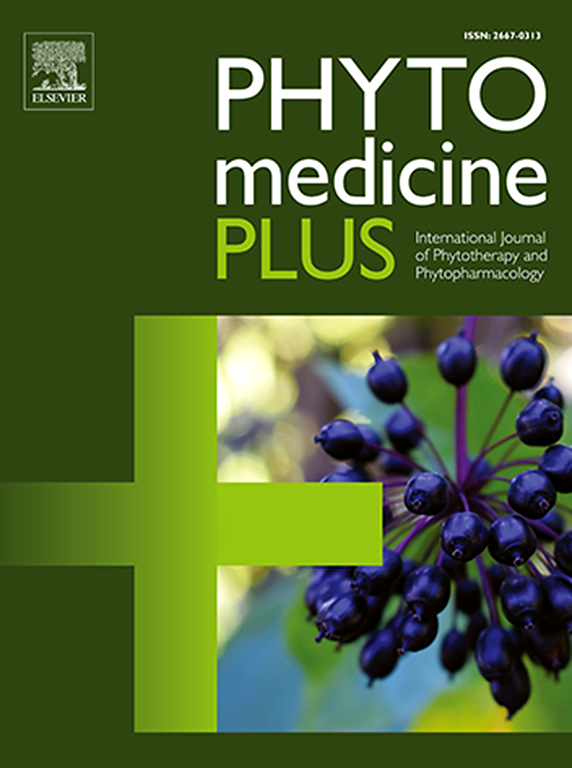Extraction of kaempferol from Wattakaka volubilis and evaluation of its protective effects against aluminium-induced liver toxicity
Q3 Pharmacology, Toxicology and Pharmaceutics
引用次数: 0
Abstract
Introduction
The goal of this study was to find out if kaempferol, a compound isolated from the Wattakaka volubilis plant, could protect the liver of rats that were given aluminum sulfate.
Methods
Kaempferol, a bioflavonoid, was isolated from the leaves of W. volubilis methanolic extract (MEWV) and characterized by using the High-performance thin-layer chromatography (HPTLC)technique. The liver protective activities of MEWV against aluminum poisoning were investigated in male albino rats, as their protective efficacy was assessed in addition to that of the silymarin standard. The oral administration of silymarin (25 mg/kg), kaempferol (10 mg/kg), and MEWV (200 mg/kg) was administered continuously for 14 days. The body and liver weights as well as serum enzymes like alkaline phosphatase (ALP), alanine aminotransferase (ALT), and aspartate aminotransferase (AST) were calculated.
Results
Advanced techniques successfully isolated and confirmed the bioactive constituent kaempferol from MEWV. When kaempferol and MEWV were given to rats that had been poisoned with aluminum, their body mass index went up significantly (p < 0.001) and the relative weight of their liver and serum marker enzymes went down significantly (p < 0.001) compared to animals that had only been poisoned and analyzed the comparative action of the extract and isolated compound using silymarin, the standard drug. Kaempferol showed better protection against aluminum-induced hepatotoxicity compared to MEWV treatment.
Conclusion
In conclusion, the results showed that kaempferol and MEWV reduced the damage done to the liver by aluminum sulfate by protecting cells, the liver, and protecting antioxidants.
山奈酚的提取及其对铝致肝毒性的保护作用
从山奈酚中分离得到一种化合物,研究山奈酚对硫酸铝给药大鼠肝脏的保护作用。方法从黄樟醇提物(MEWV)中分离得到黄樟醇类生物黄酮,采用高效薄层色谱(HPTLC)对其进行表征。研究了MEWV对雄性白化大鼠铝中毒的肝脏保护作用,并在水飞蓟素标准的基础上评价了其保护作用。连续口服水飞蓟素(25 mg/kg)、山奈酚(10 mg/kg)和MEWV (200 mg/kg) 14 d。计算体重、肝重及血清碱性磷酸酶(ALP)、丙氨酸转氨酶(ALT)、天冬氨酸转氨酶(AST)等酶。结果先进的技术成功分离并确认了山奈酚的生物活性成分。山奈酚和MEWV给予铝中毒大鼠后,其体重指数显著上升(p <;0.001),肝脏和血清标记酶的相对重量显著下降(p <;0.001)与仅中毒的动物进行比较,并使用标准药物水飞蓟素分析提取物和分离化合物的比较作用。山奈酚对铝致肝毒性的保护作用优于MEWV处理。结论山奈酚和MEWV可通过保护细胞、保护肝脏和保护抗氧化剂来减轻硫酸铝对肝脏的损伤。
本文章由计算机程序翻译,如有差异,请以英文原文为准。
求助全文
约1分钟内获得全文
求助全文
来源期刊

Phytomedicine Plus
Medicine-Complementary and Alternative Medicine
CiteScore
3.70
自引率
0.00%
发文量
178
审稿时长
81 days
期刊介绍:
 求助内容:
求助内容: 应助结果提醒方式:
应助结果提醒方式:


